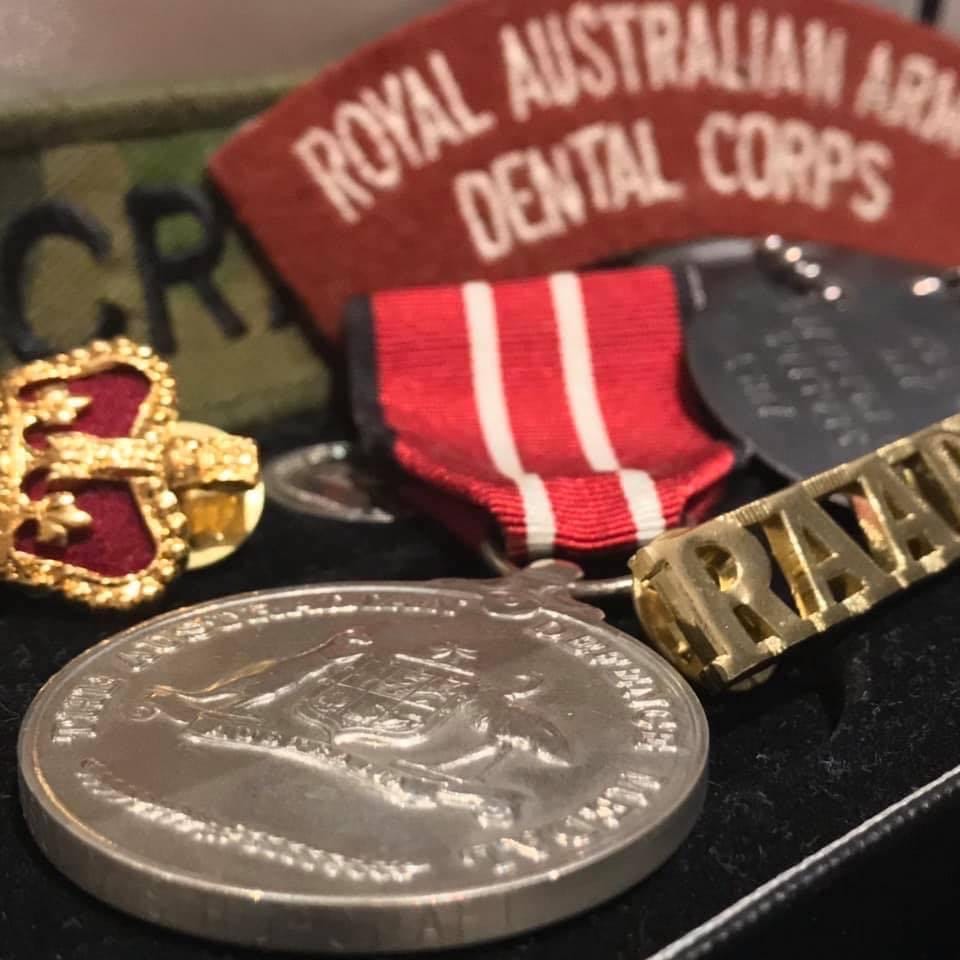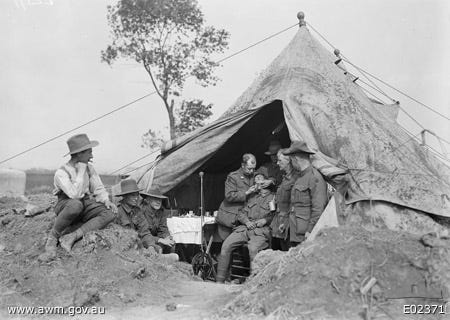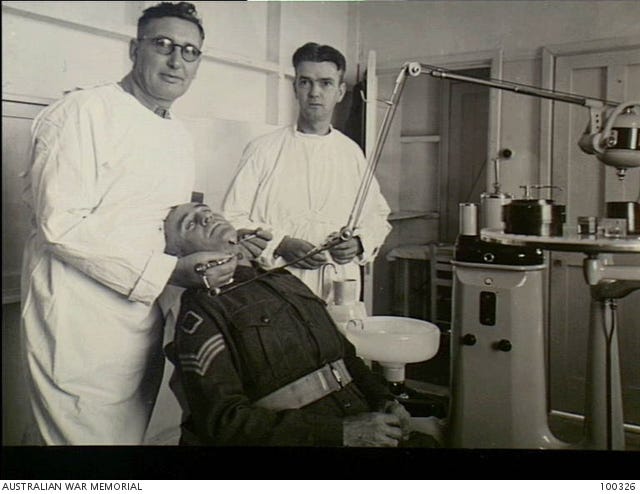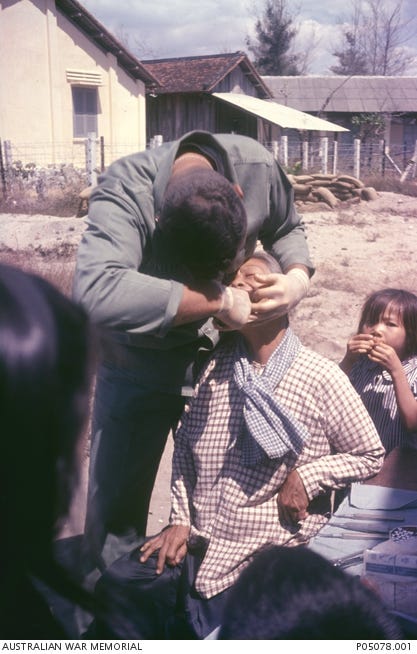Lest we forget ...
They shall grow not old, as we that are left grow old; Age shall not weary them, nor the years condemn. At the going down of the sun and in the morning We will remember them.
ANZAC Day has a special place in the history of modern Australia, but two days earlier on April 23 is the birthday of the Royal Australian Army Dental Corps (RAADC), and event of special significance for me. The RAADC was officially formed in 1943 in the midst of World War 2, but the history (and importance) of dentistry in the Australian defence forces stretches back much further.
Australian soldiers, initially under the banner of state military forces then later as the Australian Army, fought in the Boer War (1899-1902). Dental problems were common, but as there was no establishment for dental personnel within the Army, soldiers were left to the variable ability of Army doctors. Despite many soldiers being unable to physically eat the hard rations as a result of their dental problems, the solution was not to send dentists, but to issue mincing machines to make it easier for the troops to eat. Military ingenuity in action!
A dental officer of the 34th Australian Dental Unit working at an advanced post in France in June 1918 (Australian War Memorial, AWM E02371)
When World War I broke out in 1914, the Australian military should have been well positioned from a dental perspective. The consequence of poor oral health in soldiers was already well known from our experiences during the Boer War, and many in the dental profession had agitated for a dental service in the Australian military. But with no provision within the British military organisation on which the Australian miliary was based, miliary commanders ignored these requests. So when recruits started signing up to go to war, the Army was woefully unprepared from an oral health perspective. Many of these recruits were rejected on the grounds of poor oral health, and the Army had no ability to provide dental care to their own troops. Fortunately many dentists volunteered for active service, and private dentists and dental hospitals – aware both of high levels of tooth loss and dental disease, and impact this would have for the soldiers in combat - provided free treatment to soldiers during their training before being deployed overseas.
John Henderson, a final year dental student from the University of Sydney, had volunteered as part of the Australian Naval and Military Expeditionary Force deployed in August 1914 to seize German colonies in New Guinea. Fortunately, John had taken his student dental kit, and was able to perform more than 100 extractions and 160 fillings between August and December 1914. He later joined the 13th Battalion, Australian Imperial Force as an infantryman, and was killed in France on 24 August 1916.
It didn’t take long for problems to emerge at the frontline, with troops having to be evacuated with dental infections, facial trauma and other oral health problems. Not only were these dental problems debilitating in their own right, there were also significant nutrition problems, with poor oral health impacting on the ability of troops to consume rations (just like during the Boer War). In the first three months of the Gallipoli campaign there were more than 600 evacuations to Egypt for dental problems, which had a dramatic impact on the fighting capability at a critical time.
Many dentists who had volunteered to serve in other capacities were identified and embedded with the Army Medical Service to deliver much needed dental care, using the limited dental equipment that had been provided to the military doctors. Unofficially they began to be referred to as the Army Dental Corps. However, with no official status, dental officers only held honorary ranks, and it took until 1917 for their roles to become substantive. By the end of the war there were around 130 dental officers serving overseas.
Following the end of World War I it was thought that a dental corps was not required, continuing the tradition of ignoring the lessons of the past. Dental care was mostly provided by civilian dentists. At the outbreak of World War II, the Army again experienced significant issues with the poor oral health new recruits, seriously hampering their ability to quickly mobilise. It took until nearly the end of the war in 1943 for the Australian Army Dental Corps to finally split out from the Medical Corps and have its own identity, with more than 400 dentists serving at that time.
Kilo 89 Camp, Palestine. 1941-12. Captain H. Hase, Dentist, with his assistant and a patient in the dental surgery at No. 8 Special Hospital. (Australian War Memorial 100326).
Dentists have served in the Australian Army, Navy and Air Force in all major conflicts and peace keeping operations since World War I, across Europe, the Middle East and Pacific theatres, Korea, Vietnam, Northern Iraq, Somalia, Rwanda, Bougainville and East Timor and more recently again in the Middle East and Afghanistan. They have ensured that Australian soldiers, sailors and air personnel remain fighting fit, but also provided humanitarian care to local populations.
Australian RAAF dentist at work during a Medical and Civic Action Program (MedCAP). Phuoc Tuy Province, Vietnam (Australian War Memorial P05078.001)
In 1993 I joined the Royal Australian Army Dental Corps as a 4th year dental student. I subsequently served nearly nine years in the regular Army and several years in the Army Reserve, with postings to the 1st Army Recruit Training Centre, Blamey Barracks, Kapooka; Watsonia Dental Services, Simpson Barracks, Macleod; Perth Dental Services, Irwin Barracks, Karrakatta.
I am immensely proud of my service, and the small part that I played as part of the Australian Defence Force in ensuring that our troops were able to maintain good oral health as they trained and subsequently deployed when required. I am just one of many following in the footsteps of the brave Australian men and women, many of whom laid down their lives in the service of their country.
For all of our friends, family and colleagues who wore the green, blue and white uniform, thank-you.








Such an interesting read! Thanks Matt.